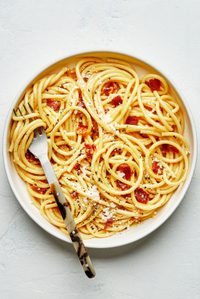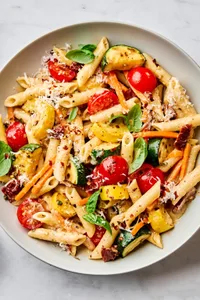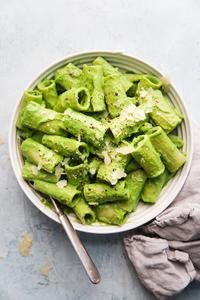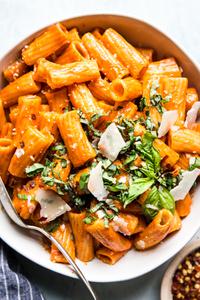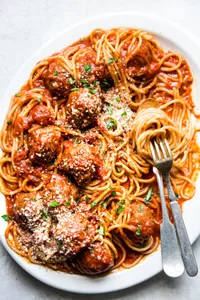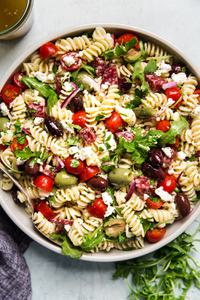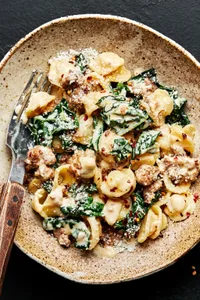Salted Water, A Step-By-Step Guide
We’ve heard the old adage, that the water you use to cook your pasta should be salty like the sea. This is because dried pasta noodles absorb salt as they boil, and properly seasoned food is the secret to tasty finished dishes. If you don’t have an Italian nonna in your life to teach you such lessons, we’re here to share our tips for salting water for pasta and cooking vegetables like broccoli. Keep in mind, you can over salt pasta water, especially if your pasta is going into a recipe with other salty additions (think capers and anchovies or even parmesan for our Pesto Spaghetti).

How To Salt Water For Pasta
It is possible to add too much salt to your pasta water, and we generally follow this water salt ratio for pasta: add 1 tablespoon kosher or sea salt to 4 quarts of water for every 1 pound of pasta. When boiling or blanching vegetables (like broccoli), add 1½ teaspoons per quart of water. It is ideal to wait until your water is at a full boil before you add the salt. The boiling water will agitate the salt and it will dissolve more quickly. But you can add the salt to your cold water if it helps you to remember to add it! If you go this route, swirl the salt around in the water to help it dissolve.
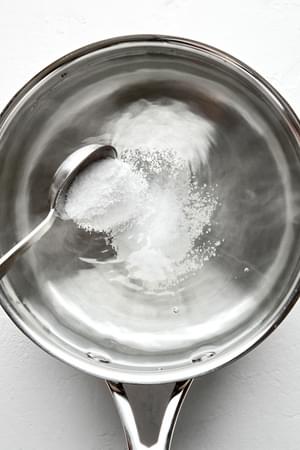
Types Of Salt For Salted Water
There’s a salt for everything, well, nearly everything! There’s salt that’s better for baking (any non-iodized salt), and salt that’s good for curing (pink salt), and salt that you can use to brine (Kosher salt), and salt that you keep on the table (the fine, uniformly-shaped table salt). And don’t get us started on the various gourmet salts out there (saffron and truffle salt are some of our favorites)! For salting water, we recommend using Kosher salt, and even then there’s quite a bit of variation in the size and saltiness amongst brands (Morton and Diamond are the most popular). You can also use fine sea salt, which is how Marcella Hazan, the doyenne of Italian cooking, would have salted her pasta water.
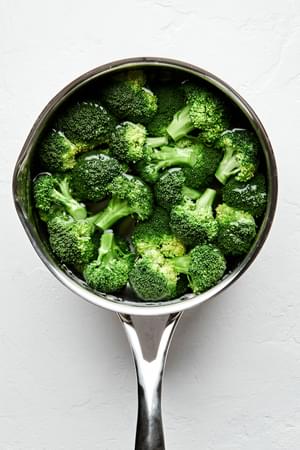
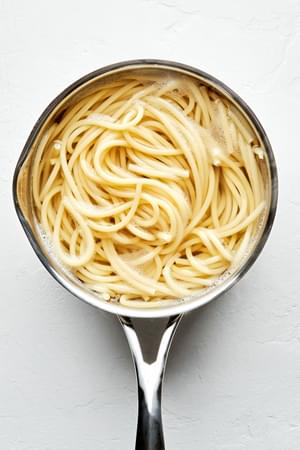
Tools You’ll Need
Now Let’s Cook With That Perfectly Salted Water
Are you ready to make all of the pasta? We thought so! Here’s some of our easy pasta dishes to get you started:
Feeling Salty?
We want to see you at work in your kitchen! Snap a photo as you learn kitchen basics and learn how to use your kitchen to its fullest. Tag us on Instagram using @themodernproper and #themodernproper. For more recipe inspiration you can follow us on Facebook, Instagram, TikTok and Pinterest.

